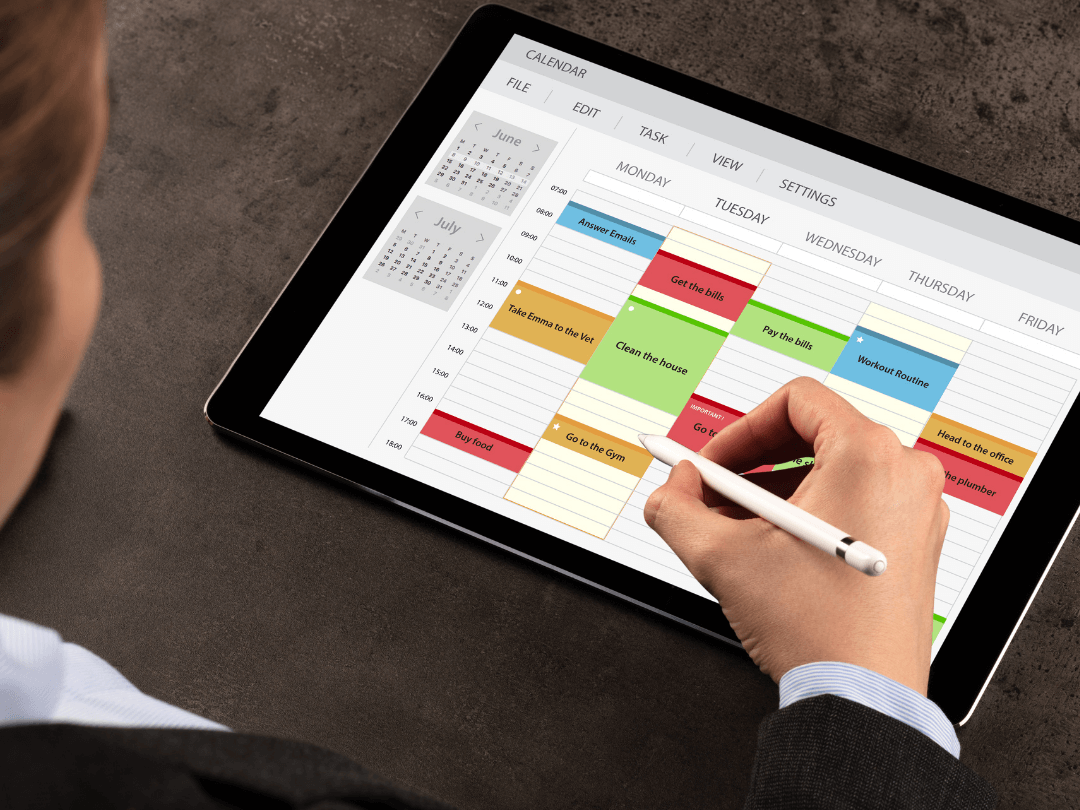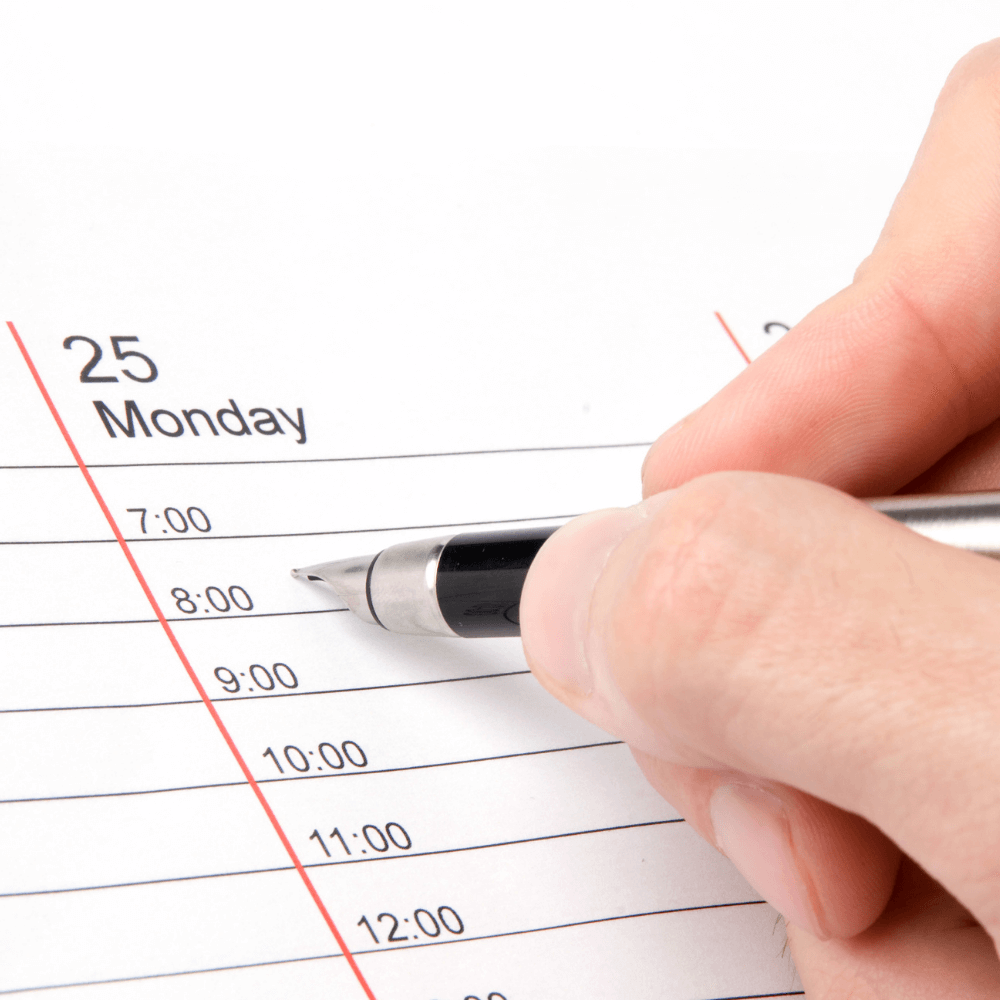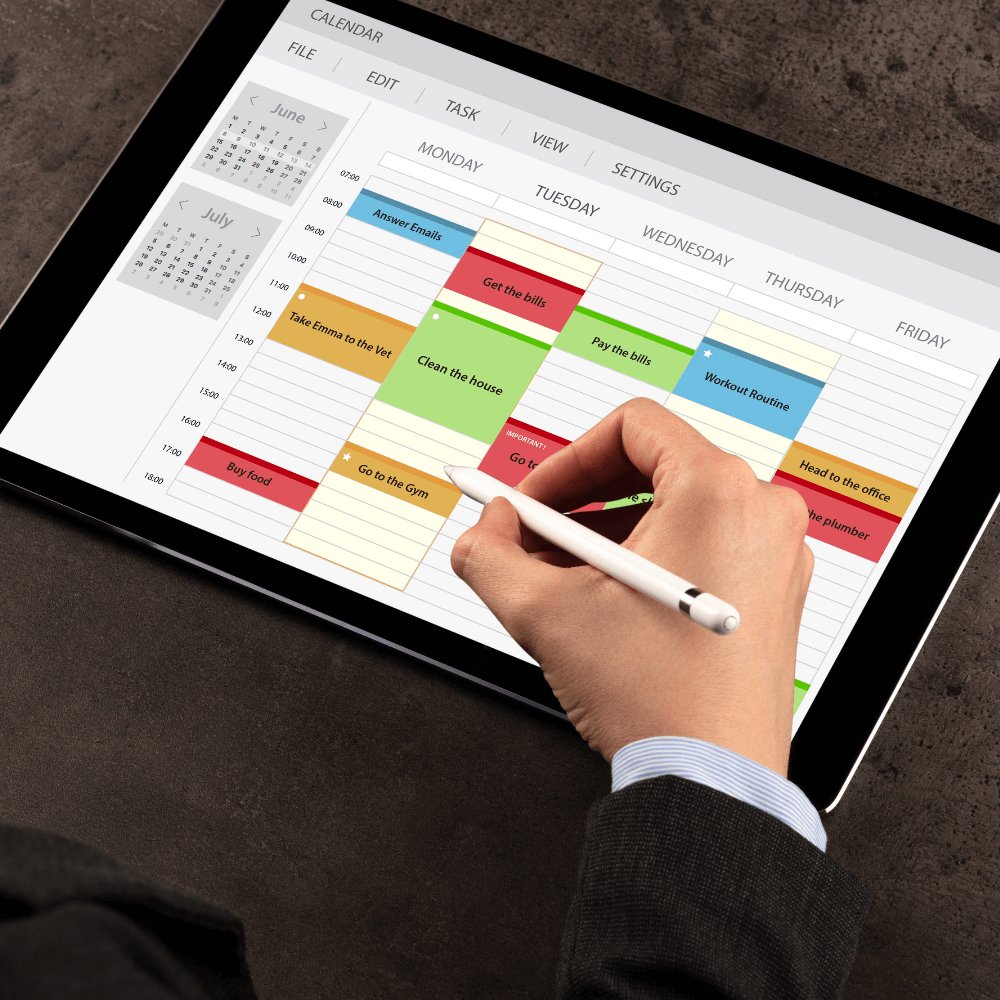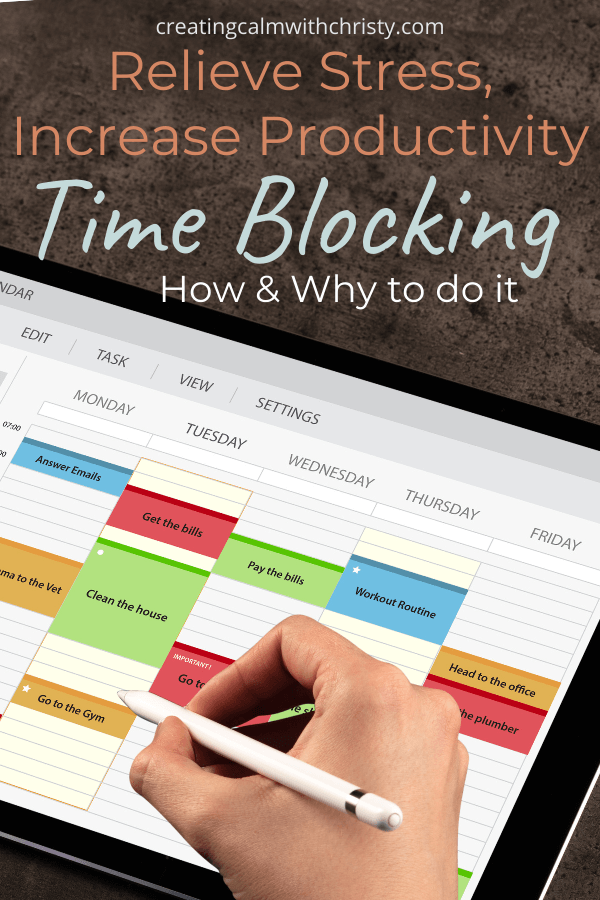
How to use time blocking to reduce stress and increase productivity
Are you looking for ways to reduce your daily stress and increase productivity? Time blocking may be the answer to your prayers. Knowing how to time block your day could reduce your stress and increase productivity. Let’s take a closer look at what time blocking is and how it might benefit you.
What is Time Blocking?
Time blocking is allocating chunks of time to specific tasks. So, instead of trying to find time to do things, you schedule the time.
The idea of time blocking is that you’re allotting time for the things that are most important to you. Note, there is a difference between important and urgent. The important things move your closer to your bigger goals, while urgent tasks are the things we have to take care of daily. Oftentimes the urgent tasks take over our days, leaving no time for what’s important. Time blocking ensures you have time set aside for the things that are most important to you.
Why should you try time blocking?
If you’re overwhelmed with your days and stressed with everything that needs to be done. Time blocking your day may help reduce some of the stress, add more structure and increase your productivity.
Time Blocking in a Nutshell
I’ve seen many time blocking variations, but I want to share with you what has worked best for me.
I’m a procrastinator and perfectionist so finding a system that keeps me on track is crucial. So, if you’re anything like me, you need to find what works best to keep you on track for the day, and time blocking your day might just be the answer.
First of all, you want to have your goals handy and anything you have planned for the week. Typically, I have all my blocks set ahead of time and try to schedule appointments around them, but if you have to make an appointment that doesn’t fit into your blocks, no worries. It’ll all be ok, I promise. Just move some things around until everything works.
I set aside blocks of time for all the things I need to do. Then, I make sure that I’m focused on what I’ve scheduled for that block.
I have time blocks each day to check emails, write posts, work on web design, clean the house, self-care, and, of course, downtime.
The most important and most difficult thing is that you move on once your time is up in a block. You can always come back later, but remember you’ve got other things to get done. A little work each day in an area is better than none. Setting the blocks designates time for everything you need to do. This eliminates the stress of when you’ll get things done and increases your productivity because you can fully focus on your task at hand.
Choose your method
The concept behind block scheduling is that it’s easy. You’re simply allotting time to a specific group of tasks or one particular larger goal. That means this can easily be done on a paper calendar or a digital one. Choose whichever method is easiest for you.
If you’ve never done digital calendars before, I’d recommend you start with paper to keep it simple, and once you have the hang of it, you can always play around with the many digital options out there.
Regardless of your method, don’t overthink this step. The only thing you want to make sure of is that your calendar needs to have an hourly breakdown. So a daily calendar is what you’re looking for. Remember to keep it as simple as possible and just get started.




Choose your method
The concept behind block scheduling is that it’s easy. You’re simply allotting time to a specific group of tasks or one particular larger goal. That means this can easily be done on a paper calendar or a digital one. Choose whichever method is easiest for you.
If you’ve never done digital calendars before, I’d recommend you start with paper to keep it simple, and once you have the hang of it, you can always play around with the many digital options out there.
Regardless of your method, don’t overthink this step. The only thing you want to make sure of is that your calendar needs to have an hourly breakdown. So a daily calendar is what you’re looking for. Remember to keep it as simple as possible and just get started.
Steps for time blocking
Block out work and scheduled appointments
Review your goals
Block out self-care and personal goals
Block out time for your "Big Goal"
fill out your day with everything else
My Mission
"My mission is to help you eliminate the overwhelm and stress of day-to-day life. Calm doesn't just happen. You create it."
The most difficult part of time blocking is actually following through, which can also be said for almost anything we do.
Too often, we get in our own heads. Keeping this process as simple as possible is the key to success. You’ll be more productive, which increases motivation.
You see, when we feel like we’re actually accomplishing things, we want to keep going. We start looking for what else we can do. So do yourself a favor and don’t overthink the process. Just dive right in and create your first schedule.
Not only does time blocking increase productivity, but it also reduces stress. Feeling we don’t have the time to do things creates unnecessary stress. With time blocking, you’re setting aside all the time you need, and if there’s not enough time, you need to move some things to another day or simply cancel them altogether.
Once you get the hang of it, you’ll be more productive and less stressed about how and when you’re going to make it all happen.
A couple things to remember as you head off on your journey to create your own block schedule.
Allow appropriate time
You want to allow yourself plenty of time to accomplish your tasks. We tend to underestimate how much time it actually takes to complete the. If you finish earlier, you can always move on to other tasks.
Keep it simple
Don’t get too elaborate—schedule blocks for important tasks and urgent tasks. Think of the tasks that will consume your thinking and set time to get those out of the way.
Follow through and stick to your schedule
If time runs out for your block, finish up what you’re doing and move on. You can always come back to this later or finish it up tomorrow.
Are you constantly wondering where your day went? Never have enough time to get All. The. Things. done? Grab my FREE list of 24 places your time could be hiding.
Reclaim Your Time
That’s it. You have everything you need to start time blocking your day.
I hope you found this post on time blocking helpful. If so, please share it on your social media. You never know who else it may help. Also, I’d love to hear from you. Please leave a comment below or shoot me an email if you liked the post, have questions or suggestions regarding this post, or any topics or ideas for future posts.
I wish you the very best in creating more calm in your life.

Join
Keep in touch


0 Comments